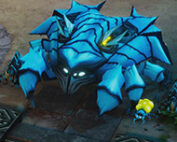Yume Nikki PS1 Game Online

Description
Yume Nikki PS1 is a surreal exploration adventure that reimagines the cult classic through PlayStation-style visuals and lo-fi dreamscapes. You play as Madotsuki, a quiet girl who explores layered dreams that shift and fold into one another. This version condenses the original concept into a smaller, haunting experience filled with mysterious imagery and emotional stillness. It’s a meditation on curiosity and memory, inviting players to interpret meaning through wandering rather than dialogue or action.
Dream Worlds and Exploration
In Yume Nikki PS1, your journey begins in Madotsuki’s room, leading to the Nexus—a circular hub connecting different dreams. From there, two dream worlds await, each with its own rhythm and unsettling design. There’s no combat, no missions—only movement and discovery. Every step deepens the surreal mood, where familiar shapes blur into abstraction. Exploration is its own reward, and each location feels like a fragment of consciousness preserved in pixels.
- The Nexus: A quiet, looping space that anchors the dream worlds together.
- Dream Environments: Expect floating corridors, strange corridors, and bizarre symbols scattered across empty landscapes.
- Effects: Collectible items that alter Madotsuki’s abilities or appearance, letting you explore differently with each run.
The lack of direct objectives encourages observation. Instead of guiding you, Yume Nikki PS1 lets your own curiosity lead the way. Subtle lighting, ambient sound, and distant shapes suggest patterns that may or may not exist. The game rewards patience and interpretation over progress.
Retro Style and Design
This version distinguishes itself through its deliberate use of PS1-era visuals. Polygonal geometry, sharp textures, and fog-like distance effects recreate a forgotten era of 3D surrealism. These constraints don’t limit the game—they define its identity. Every flicker and stutter adds to the dream’s fragility, turning nostalgia into atmosphere.
- Authentic Feel: The game can run on actual PlayStation hardware, reinforcing its retro charm.
- Designed Limitations: The low-poly visuals enhance mystery, making the world feel distant and uncanny.
Rather than striving for realism, Yume Nikki PS1 embraces distortion. Its worlds feel incomplete on purpose, leaving space for imagination. Every low-resolution texture becomes a suggestion rather than an answer, creating tension between recognition and uncertainty.
Tips and Common Questions
How do I progress? Explore freely—progress is emotional rather than mechanical. New effects or pathways appear through persistence.
What happens when I wake up? You return to Madotsuki’s room, where you can save, rest, and enter new dreams.
Are there secrets? Yes. The game hides small interactions and visual oddities meant to be discovered accidentally.
Conclusion
Yume Nikki PS1 distills the essence of its predecessor into a brief yet unforgettable dream experience. Its PS1-era visuals, looping worlds, and silent storytelling form a strange harmony that lingers long after waking. The result is a personal and meditative journey through fragmented memories, where every player creates their own interpretation of what it means to dream. For those drawn to surreal exploration and atmosphere over action, Yume Nikki PS1 remains a haunting reminder that sometimes the quietest adventures echo the loudest.


































 For Boys
For Boys  For Girls
For Girls 



















































































